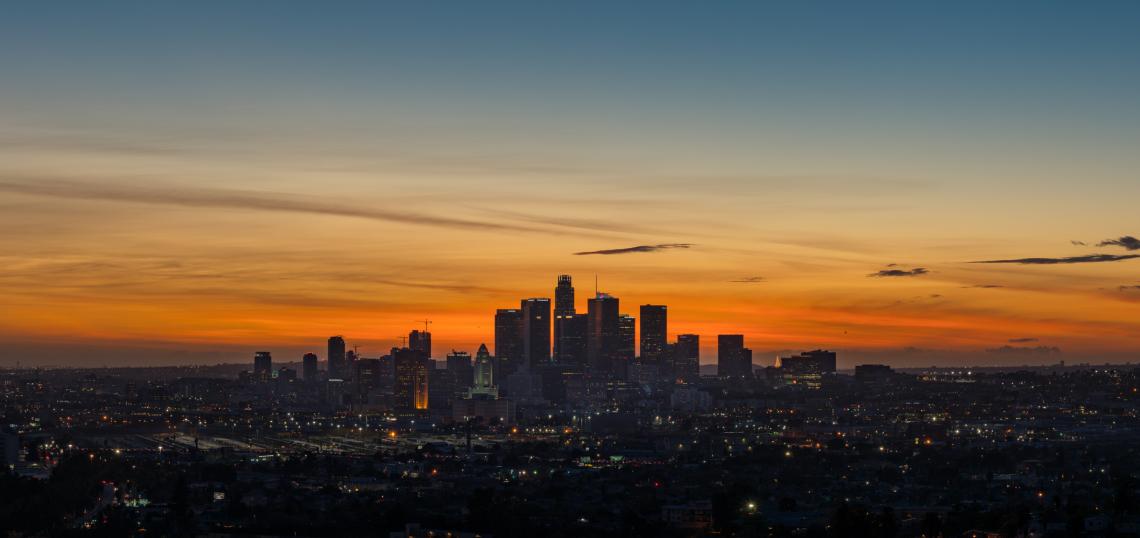Things to read from the past week:
- San Gabriel Mission fire provokes deep, conflicting reactions: "Long overlooked in the solar system of Catholic missions in Southern California — it’s not as famous as its San Juan Capistrano counterpart, as picturesque as the ones in Ventura and Santa Barbara, or as quaint as Mission San Fernando — the San Gabriel Mission had earned a reappraisal in recent years from academics and even putative adversaries, exacerbating the emotions felt in the wake of the inferno." (LA Times)
- Online Petition Calls For More Visible, Complete Tribute To Bruce’s Beach In Manhattan Beach: "A grassy oceanfront park in Manhattan Beach was renamed Bruce’s Beach in 2006 for the Bruce family, which owned the property and ran it as a safe place for recreation for the Black community. Racism, however, drove them off the property in the 1920s." (CBS)
- Banning Cars Doesn’t Solve Everything: "Taking the time to rethink cities around non-automobile modes of transport is an important task for the future of mobility and the environment. However, just banning cars* doesn’t go far enough to create truly equitable outcomes for all residents or undo the harm caused by poor urban planning and unjust government policies that targeted non-white communities. To do that, we need to rethink the structure of local government and community engagement to ensure continuous outreach and feedback from all stakeholders, not just the privileged few who can show up at every single meeting." (The Place Space)
- LA Wants To Quickly House 15,000 Homeless People. How?: The government hopes to lease thousands of apartments and then subsidize rent for the occupants. In many cases, they will be leased off the regular rental market, such as studios and 1-bedroom units. But the plan also calls for the use of "shared-housing," which is basically a fancy term for a larger home with several roommates. (LAist)
- Your TAP card will be available on iPhone and Apple Watch this year (The Source)
- Trump to move forward with rollback of bedrock environmental law: The rollback, first proposed in January, is moving forward amid heightened tensions over racial injustice stemming from police brutality and health disparities laid bare by the coronavirus. Critics argue that Trump’s erosion of 50-year-old protections will hit minority communities the hardest since polluting industries are disproportionately likely to be located in neighborhoods with large nonwhite populations. (The Hill)
- The A Line (Blue) turns 30: "The A Line (Blue) opened to the public on July 14, 1990, marking the return of mass transit by train to Los Angeles for the first time since 1963." (The Source)
- The hidden toll of California’s Black exodus: "In 2000, just before Wilson left L.A., California had the country’s second-largest Black population at more than 2.2 million people. But under the surface, a seismic shift was happening in where people lived, the opportunities they chased and the social networks they relied on." (CalMatters)
- Big news for two local instituions: the Rose Parade is cancelled for the first time in 75 years due to COVID-19 and LA Pride bids adieu to West Hollywood (LA Times)
- Pedestrian Access Through Country Club Park: "Nia exposes a serious access and equity issue. It might not seem like an issue for those who drive, but the lack of pedestrian access into certain areas of Country Club Park results in significantly longer trips to get to other major corridors. For some folks, it could mean missing a bus. For disabled folks or families with young kids, the extra distance can ultimately be too much." (Hoff the Beaten Path)
- Plans canceled for long-heralded CSULB housing projects Downtown: Initial plans were to open each of the projects in two phases: First, get a set of classrooms inside each development to nurture the connection between the university and Downtown and, second, begin construction of affordable housing for students and staff....But those plans fell through as one project changed hands and the coronavirus pandemic upended the economy. (Long Beach Post)
Real Talk: How L.A.’s Freeways Contribute to Inequality and the City’s Racial Divide (LA Taco)
Report: Gold Line Extension to Montclair Projects to Increase Metro, Metrolink Ridership by 35, 50 percent: "Study details ways both agencies can coordinate services to better compliment each other, includes design changes to Claremont, Montclair stations" (Streetsblog LA)
High-Speed Rail’s Potential 2020 Turning Point: "2008 will be remembered as the year California voters launched America's first HSR project. And 2020 could be the year America decides to complete it." (Streetsblog SF)
A New York writer asked ‘L.A. Twitter’ where she should live. It didn’t go well: "Although Lorenz was tweeting for her own reconnaissance mission, her question unleashed for many the memories of an embarrassing string of New York Times pieces, largely in the Travel and Real Estate sections, that make L.A. sound like an alien kingdom, devoid of history or meaning that doesn’t involve a New Yorker’s stamp of approval." (LA Times)
LACMA Town: The Museum as Urban Catalyst, Not Urban Desert: "The current design — a stack of two amoeba-shaped concrete slabs, proposed by Swiss architect Peter Zumthor — floats 20-plus feet above the ground, bridging Wilshire Boulevard. In its antiseptic relationship to the ground, it ignores the street, leaving the same windswept, sun-baked, lifeless modernist plazas that the legendary urbanist Jane Jacobs decried 60 years ago in her groundbreaking The Death and Life of Great American Cities. By Jacobs’s measure, the Zumthor design not only arrives DOA but also kills the street." (LA Review of Books)






